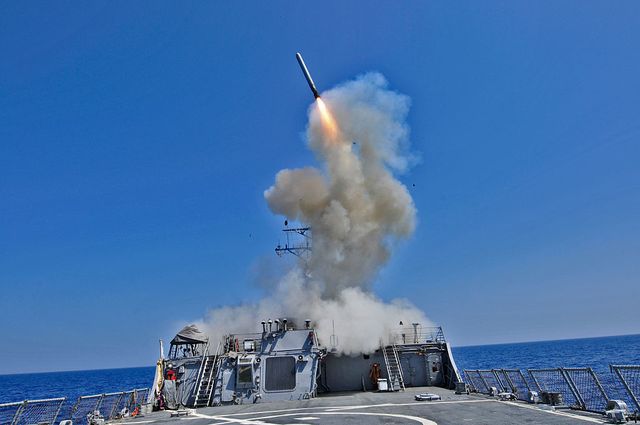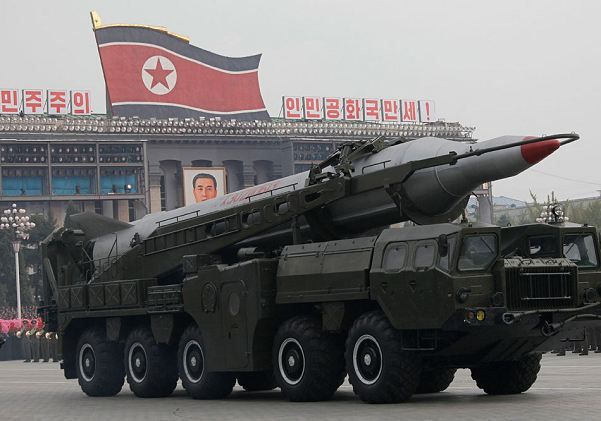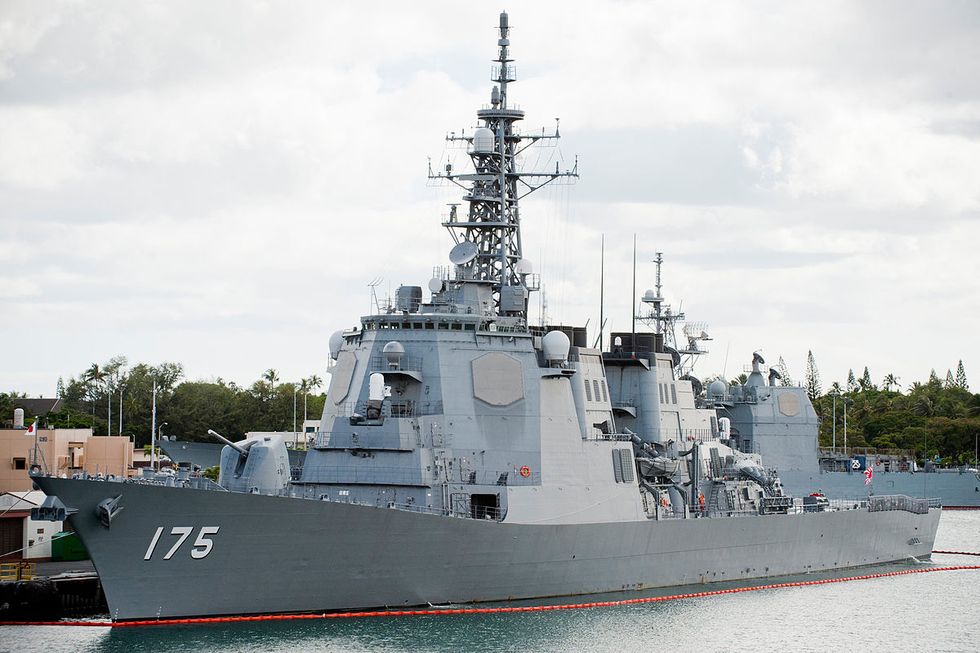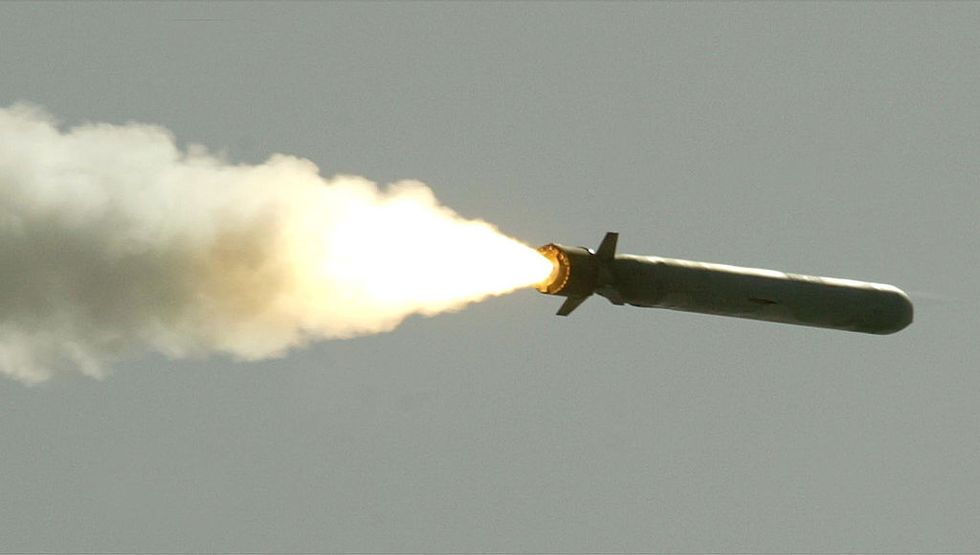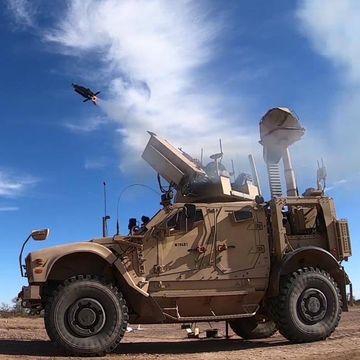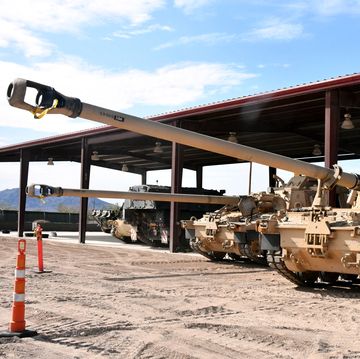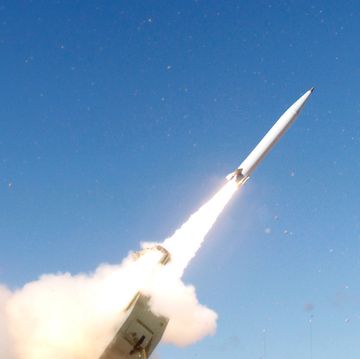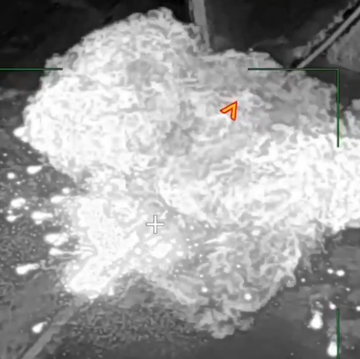The Japanese government reportedly wants to acquire Tomahawk cruise missiles as a defense against North Korea's missile program. If true, this would be a sharp departure from the country's pacifist security polic, and a reflection of the new reality for nations near North Korea.
Japan's Self Defence Forces lack the long-range, offensive weapons that could cross the Sea of Japan and preemptively destroy threats such as the Rodong medium-range ballistic missile. North Korea reportedly has between 150 and 200 Rondong missiles. According to the Sankei Shimbun, the government of Prime Minister Shinzo Abe wants to buy the BGM-109 Tomahawk cruise missile for just this purpose.
North Korea has repeatedly vowed to attack Japan, and for years now the belligerent regime has maintained it has the ability to lob missiles with conventional warheads at its neighbor. However, Pyongyang's recent advances in nuclear weapons development have left Tokyo wanting the ability not only to shoot down North Korean missiles but also to destroy them before launch, if need be. Blowing up a stationary missile before launch is certainly easier than hitting a moving target.
First introduced in the 1980s, the Tomahawk missile is designed to cruise at subsonic speeds, flying low to avoid enemy radars. The 18-foot missile has a single turbojet engine that propels it to 550 miles an hour against targets up to 900 miles away. Modern versions are GPS guided. They can be redirected against new targets in flight and can send digital imagery back to their controllers. The missile is equipped with a 1,000-pound high explosive warhead.
Japan wants an unknown number of Tomahawks. The missiles themselves will likely be deployed among Japan's fleet of Aegis destroyers. Each destroyer has 90 Mk. 41 vertical launch silos, and each silo can accommodate one Tomahawk.
The purchase of offensive cruise missiles would be a first for Japan and a major change in the country's security policy. Having forsaken war as an instrument of national policy, Japan maintains so-called "Self Defense Forces" that are defensive only. Offensive weapons such as aircraft carriers, marines, and cruise missiles have been prohibited as a matter of policy.
The evolving environment in East Asia has Japan rethinking these prohibitions. The Ground Self Defense Forces—that is, the Japanese Army—is currently training its first brigade of marine infantry. Previously considered a tool of offensive warfare because of their ability to invade from the sea and seize land, marine units were expressly forbidden in postwar Japan. Recently however, with tensions rising over territorial rights in the East China Sea, Japan has reframed the concept of marines as a defensive force that can retake Japanese territory. Similarly, a purchase of Tomahawk missiles would be justified as capable of launching pre-emptive defensive strikes.
How might such missiles used? Imagine North Korea threatens to launch nuclear-armed Rodong missiles against Japan. Japan's fleet of RQ-4 Global Hawk high-altitude surveillance drones observe the missiles being fueled (an hours-long process), but the country's military has no options to destroy them before they are launched. An arsenal of Tomahawks would give Japan a first-strike capability against those missiles.
The problem, however, is the second and third (and fourth, and fifth, and twelfth strikes) that would be necessary to hit North Korea's missile arsenals, particularly mobile launchers that are difficult to locate and destroy. Japan may buy cruise missiles to conduct a surgical strike, but any attack on North Korea would not be limited to a single strike. It would be the beginning of a long, possibly open-ended campaign that Japan is ill-suited to carry out. Japan lacks the reconnaissance and intelligence assets, strike jets and bombers, and refueling tankers and military infrastructure for such a campaign. It would be up to the U.S. to finish the job.
All of this means that a Japanese purchase of Tomahawks is a lot more complicated than it sounds. It also requires U.S. government permission. That's not a sure thing, either. Japan's ability to start a shooting war with North Korea that America would have to finish would be, shall we say, an unwanted variable for Washington. On the other hand, the U.S. government and Trump in particular have been vocal in demanding Japan do more for its own defense. It would be difficult to turn down a loyal ally that merely wants the tools to defend itself.

Kyle Mizokami is a writer on defense and security issues and has been at Popular Mechanics since 2015. If it involves explosions or projectiles, he's generally in favor of it. Kyle’s articles have appeared at The Daily Beast, U.S. Naval Institute News, The Diplomat, Foreign Policy, Combat Aircraft Monthly, VICE News, and others. He lives in San Francisco.
